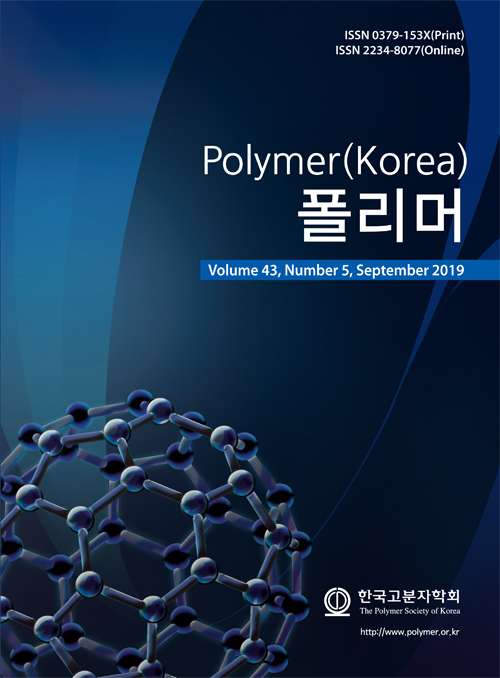Although blends of cellulose
acetate (CA) and poly(L-lactic acid) (PLA) would show good
biodegradability, the mechanical property deterioration of the blends due to
the immiscibility of the two polymers refrains their using. In this study, CA-g-PLA
which could be used as a compatibilizer of the blends was synthesized via a
ring-opening polymerization of L-lactide. CA-g-PLAs with various
graft yields were synthesized by varying the weight ratio of L-lactide
to CA and reaction time. Then the properties of the CA-g-PLA such as
graft yield and degree of the substitution were characterized by using TGA,
GPC, FTIR, and 1H NMR spectroscopy. Graft yields of the CA-g-PLA
copolymers were determined by both TGA and 1H NMR analysis. The
graft yield of CA-g-PLA increased with increasing the weight ratio of L-lactide
to CA up to 10:1 and the grafting time up to 16 hours at 130 °C. All the
analysis results indicated that CA-g-PLA exhibits copolymer properties
instead of simple mixture properties of CA and PLA
셀룰로오스 아세테이트(CA)를
폴리(L-락트산) (PLA)과 블렌드시키면 생분해성이
향상될 것으로 기대되지만 두 고분자 사이에 혼화성이 없어 물성 저하가 심해 사용하기 곤란하다. 본 연구에서는
이들 블렌드계의 상용화제로 사용될 수 있는 CA-g-PLA를 L-락타이드의 개환중합을 이용하여 합성하였다. CA에 대한 L-락타이드의
무게비와 반응 시간을 달리하여 여러가지 그래프트율을 갖는 CA-g-PLA를 얻고, 이들의 그래프트율, 치환도 등의 특성을 열중량분석기(TGA), 젤투과 크로마토그래피, FTIR, 1H NMR 분광분석기를
사용하여 분석하였다. TGA와 1H NMR 분석에 의한 그래프트율이 서로 일치하였으며, 그래프트 반응
시 사용한 CA에 대한 L-락타이드의 비율이 커지고 반응 시간이 길어질수록 그래프트율이 크게 나타났다. 모든
분석 결과에서 CA-g-PLA는 CA와 PLA이 단순 혼합이 아닌 공중합체로서의 특성을 나타내었다
Keywords: cellulose acetate, poly(L-lactic acid), graft yield, thermogravimetric analysis (TGA), proton nuclear magnetic resonance (1H NMR).
- Polymer(Korea) 폴리머
- Frequency : Bimonthly(odd)
ISSN 0379-153X(Print)
ISSN 2234-8077(Online)
Abbr. Polym. Korea - 2023 Impact Factor : 0.4
- Indexed in SCIE
 This Article
This Article
-
2019; 43(6): 852-861
Published online Nov 25, 2019
- 10.7317/pk.2019.43.6.852
- Received on Jun 18, 2019
- Revised on Jul 25, 2019
- Accepted on Sep 10, 2019
 Correspondence to
Correspondence to
- Young Ho Kim
-
Department of Organic Materials and Fiber Engineering, Soongsil University, Seoul 06978, Korea
- E-mail: ssyhkim@ssu.ac.kr









 Copyright(c) The Polymer Society of Korea. All right reserved.
Copyright(c) The Polymer Society of Korea. All right reserved.